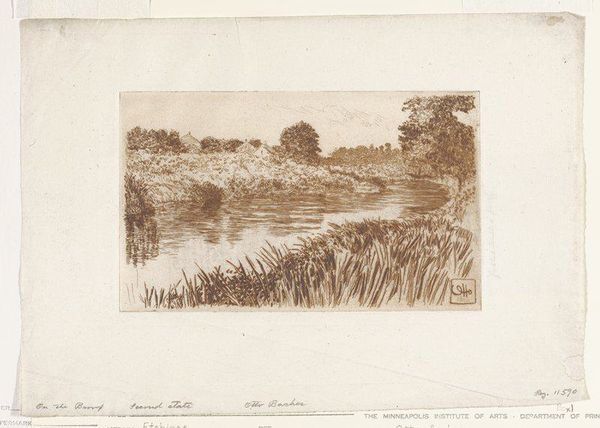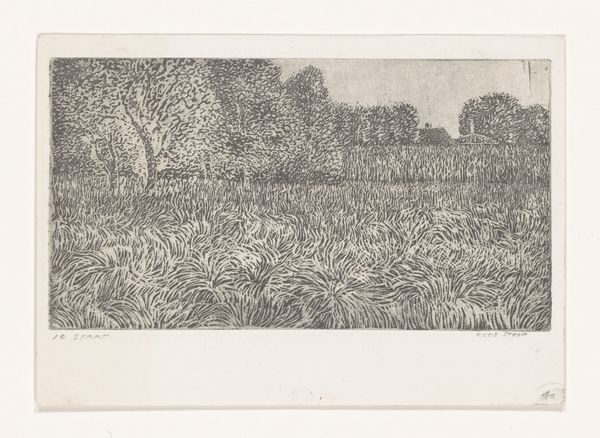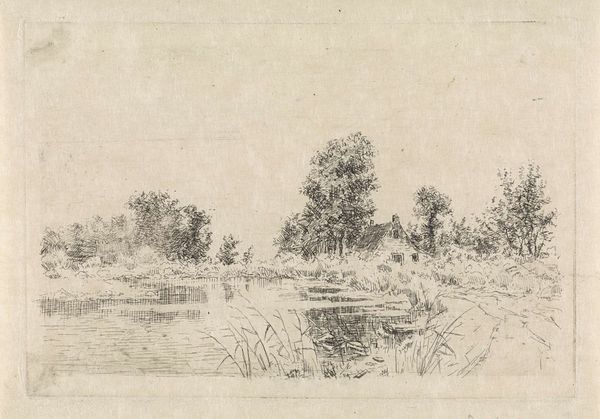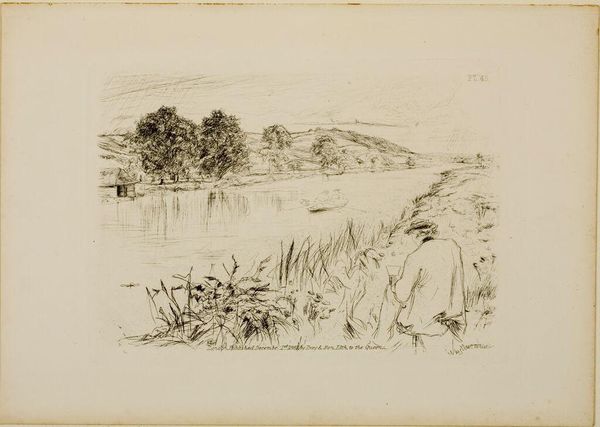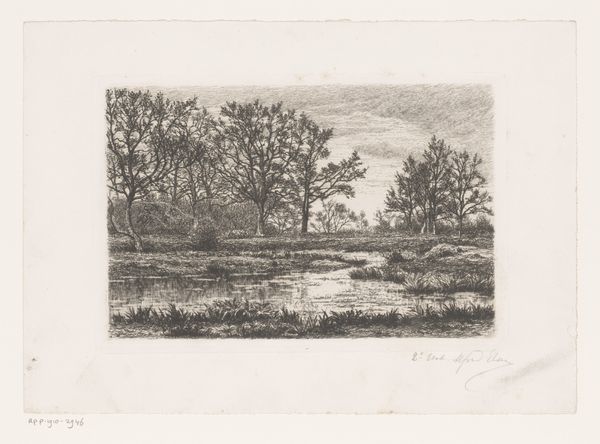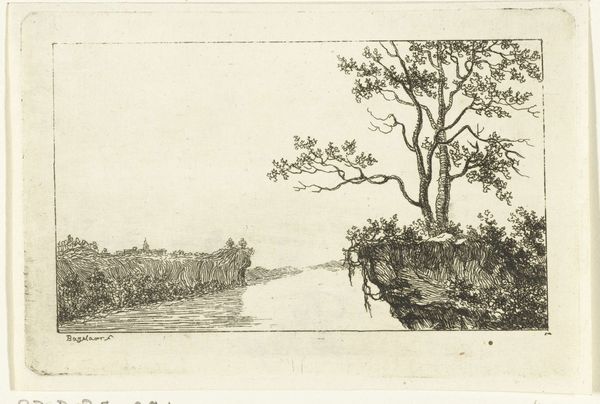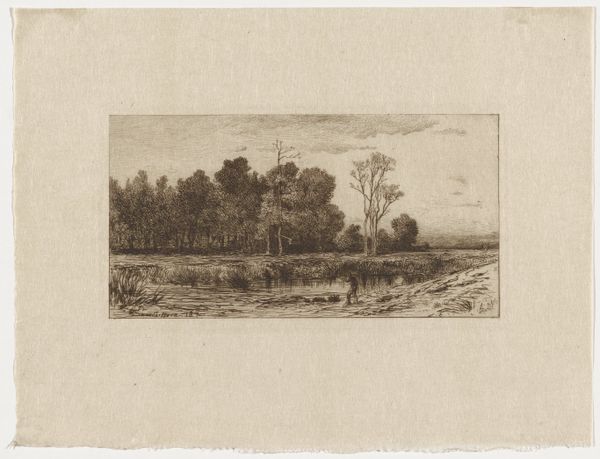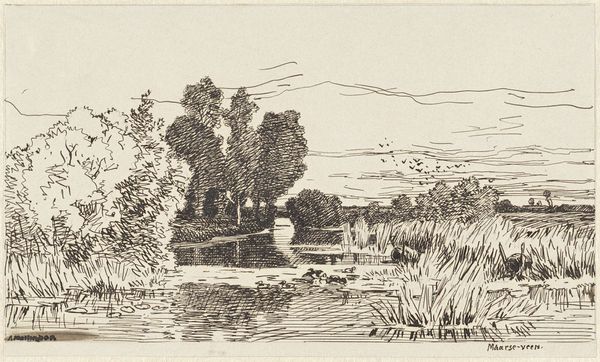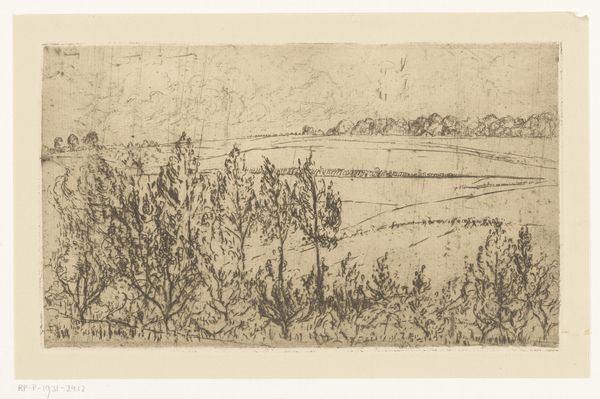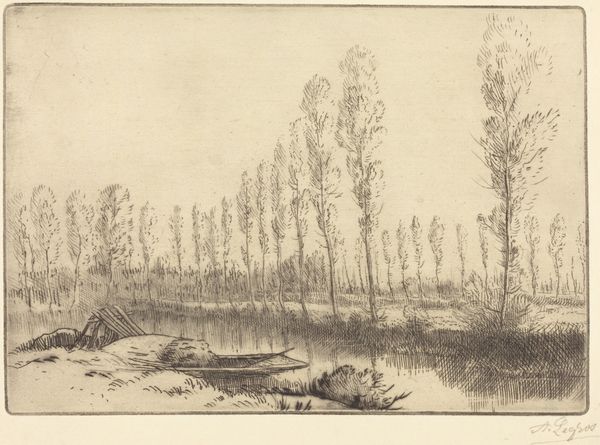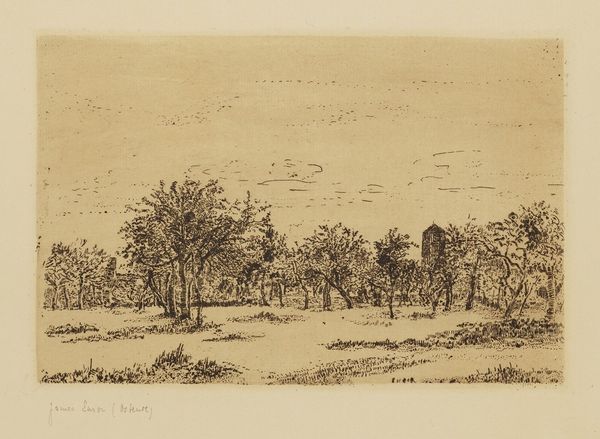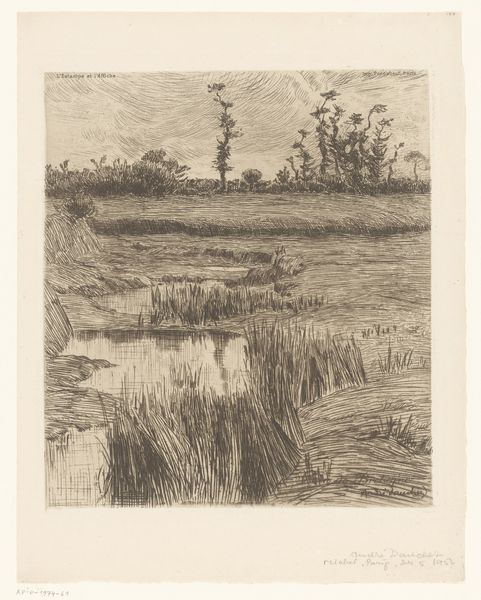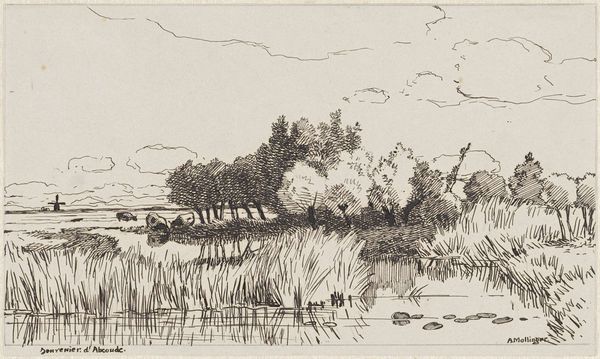
print, etching
# print
#
etching
#
landscape
#
etching
#
united-states
#
realism
Dimensions: 4 3/16 x 7 7/8 in. (10.64 x 20 cm) (plate)7 x 10 in. (17.78 x 25.4 cm) (sheet)
Copyright: No Copyright - United States
Editor: So, this etching, "On the Bronx," was made by Otto Bacher in 1906. It's currently at the Minneapolis Institute of Art. It's a pretty little landscape scene, very detailed given the medium. What do you make of it? Curator: It's interesting to consider the social context. At the turn of the century, the Bronx was undergoing significant transformation from rural farmland to a more urbanized landscape. What do you think Bacher might be trying to say about this change through his choice of subject matter? Editor: That's a great point. I hadn’t really thought of that. It almost feels a bit romantic, in its rendering of a serene, almost untouched natural scene. Maybe there's a sense of longing for a past that was quickly disappearing? Curator: Exactly! There's definitely a dialogue here about what kind of spaces are valued, especially during periods of rapid development. Where did you look in the artwork when first assessing its "untouched natural scene?" Editor: I think the calm water, the abundance of plant life right up to the bank, the very subtle buildings hidden away in the landscape, almost overshadowed by the natural elements. It all combines to suggest somewhere away from the everyday modern grind. Curator: Yes, and consider how Bacher’s artistic style and medium contribute to this perception. The etching process lends itself to capturing fine detail. Do you see parallels with the Arts and Crafts movement's celebration of handcrafted aesthetics and nostalgia for pre-industrial times? Editor: Definitely. Thinking about it that way, it's less a simple landscape and more of a statement about the values of that era. I hadn’t thought about how an etching could connect to the social currents of the time. Curator: These landscapes played a role in constructing a cultural narrative of place, especially as American cities became epicenters of immigrant life and labor struggles. Next time, observe an artwork in its time using your social context 'lens' -- what do you anticipate will shift in your understanding? Editor: I guess a whole lot! Thank you.
Comments
No comments
Be the first to comment and join the conversation on the ultimate creative platform.
